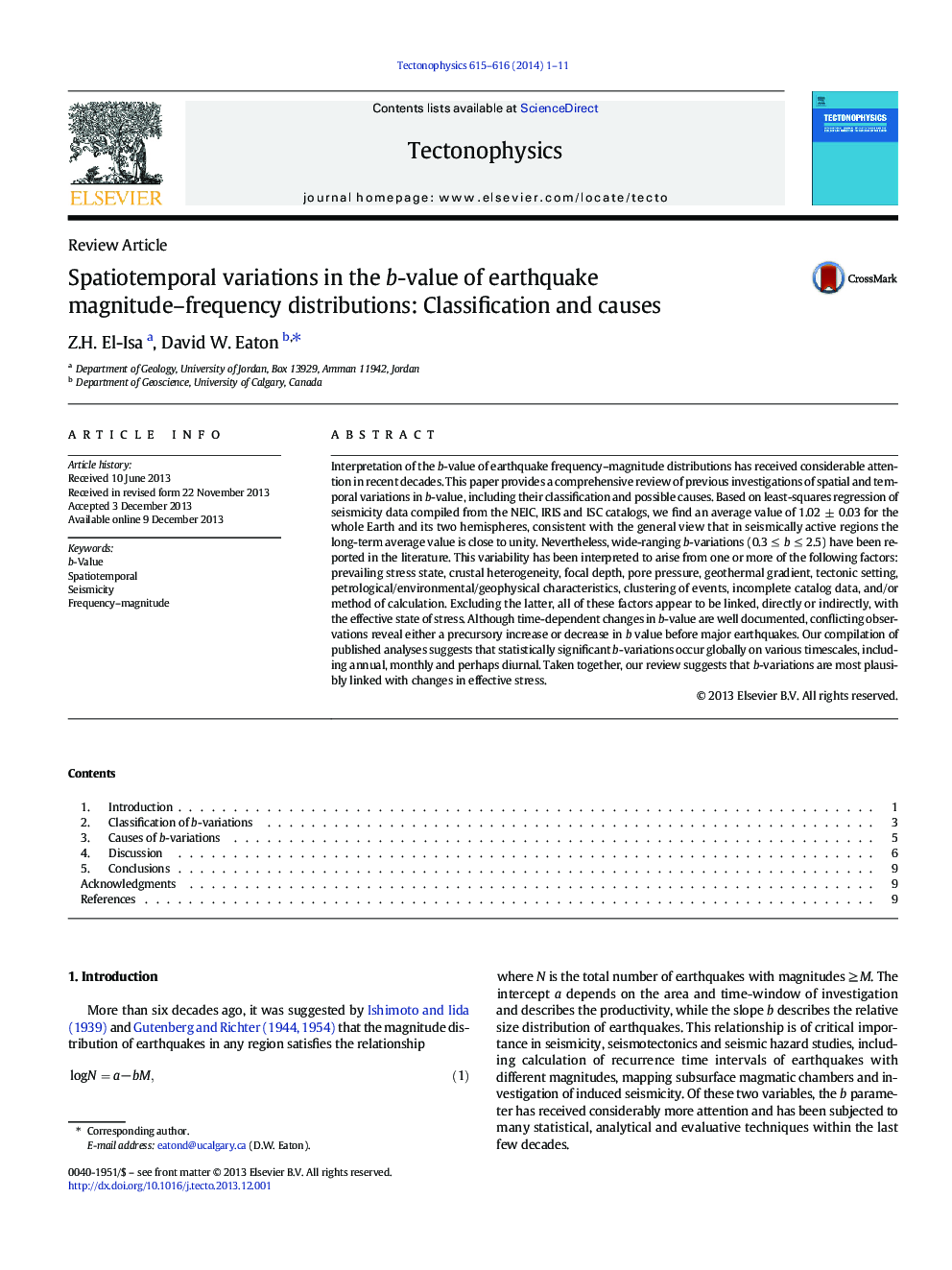| Article ID | Journal | Published Year | Pages | File Type |
|---|---|---|---|---|
| 6433900 | Tectonophysics | 2014 | 11 Pages |
â¢Temporal and spatial b-variations express in different ways prior to and after major earthquakes.â¢Factors including tectonic setting, focal depth and incomplete catalog data affect b value.â¢The primary factor is effective state of stress on a fault and surrounding rockmass.
Interpretation of the b-value of earthquake frequency-magnitude distributions has received considerable attention in recent decades. This paper provides a comprehensive review of previous investigations of spatial and temporal variations in b-value, including their classification and possible causes. Based on least-squares regression of seismicity data compiled from the NEIC, IRIS and ISC catalogs, we find an average value of 1.02 ± 0.03 for the whole Earth and its two hemispheres, consistent with the general view that in seismically active regions the long-term average value is close to unity. Nevertheless, wide-ranging b-variations (0.3 â¤Â b â¤Â 2.5) have been reported in the literature. This variability has been interpreted to arise from one or more of the following factors: prevailing stress state, crustal heterogeneity, focal depth, pore pressure, geothermal gradient, tectonic setting, petrological/environmental/geophysical characteristics, clustering of events, incomplete catalog data, and/or method of calculation. Excluding the latter, all of these factors appear to be linked, directly or indirectly, with the effective state of stress. Although time-dependent changes in b-value are well documented, conflicting observations reveal either a precursory increase or decrease in b value before major earthquakes. Our compilation of published analyses suggests that statistically significant b-variations occur globally on various timescales, including annual, monthly and perhaps diurnal. Taken together, our review suggests that b-variations are most plausibly linked with changes in effective stress.
